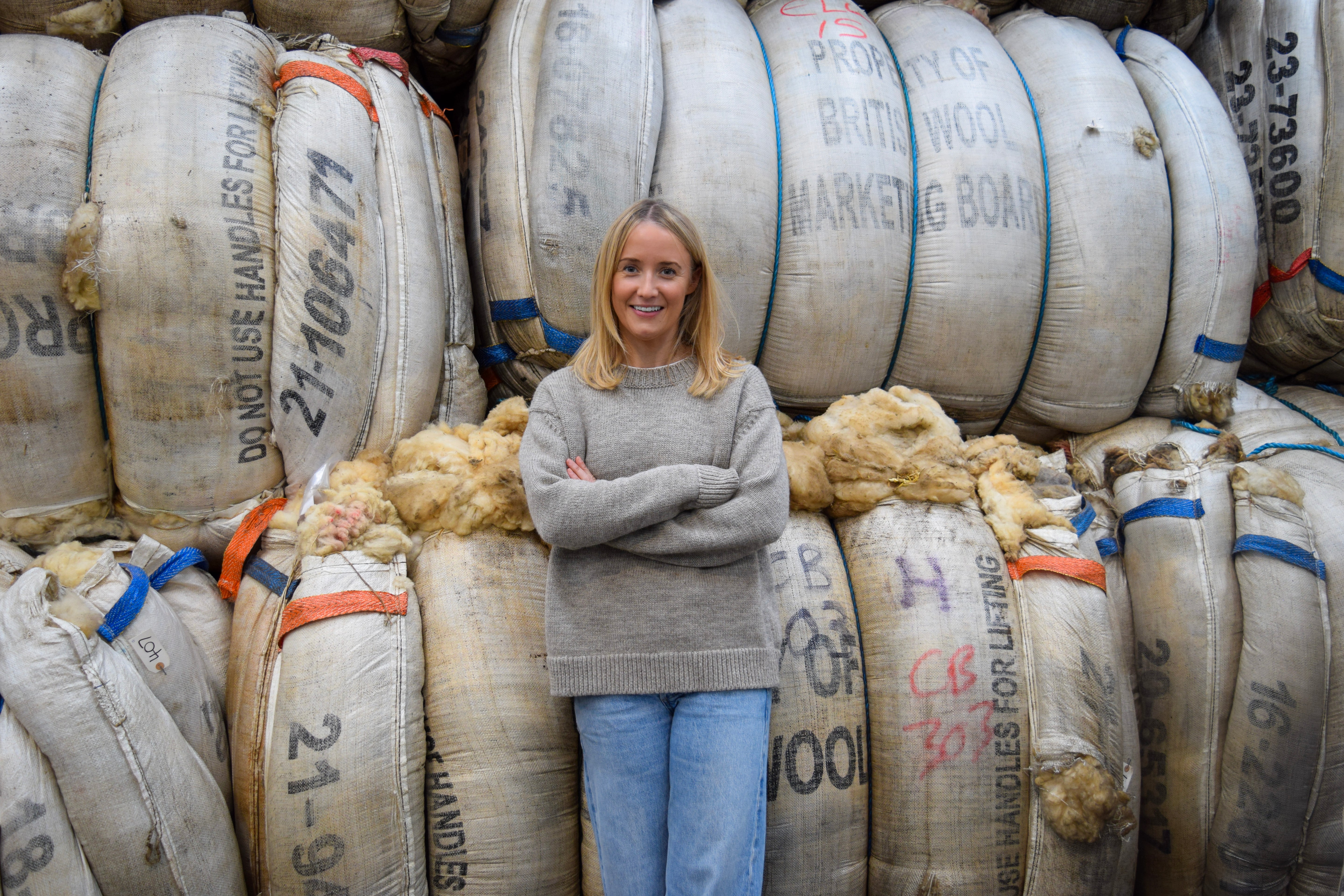From the factories of Leeds to the hills of Dartmoor, Britain’s history is interwoven with wool.
Sheep have been farmed here for around 6000 years. It’s believed that sheep were domesticated in Europe as early as 8000 BC. However, the practice didn’t catch on in Britain for another 4000-5000 years, when Neolithic settlers brought their sheep to our islands.
We know that by 1900 BC wool was being spun and woven for clothing. A piece of woollen cloth from this time was found in an oak coffin buried in an early Bronze age barrow in Yorkshire.
Back then, British wool was mainly brown as it came from the dark Soay sheep. The plump white sheep of storybooks and countryside paintings were likely brought here by settlers and invaders. Indeed, most of the breeds you’ll find in Britain today are descendants of sheep that originated elsewhere in Europe and further afield.
There are references to a British wool ‘as fine as a spider’s web’ in a parchment dating from around 400 AD. Woollen remnants have also been discovered in early medieval cemeteries in Sutton Hoo, Suffolk. And by 700 AD, Britain was exporting woollen cloth across Europe.

A growing industry
The wool industry grew significantly over the years, particularly after the Norman invasion of 1066. By 1100, wool was our largest industry and sheep were more numerous than all other livestock put together. The largest flocks belonged to abbeys and monasteries, but there were thousands of smaller farmers across Britain.
By 1500, roles linked to the wool industry, such as farming, shearing, grading, carding, spinning, weaving and dying were the main sources of income in England. Fine wool was often shipped over to master weavers in Italy and Belgium.

The Industrial Revolution
Things started to change with the Industrial Revolution in the mid-18th century. Processes formerly carried out by hand began to be mechanised. While the wool industry downscaled in some areas of the UK, it flourished in others. Yorkshire, for instance, benefited from plentiful supplies of the soft water, coal and sandstone needed for processing, and had plenty of green spaces to rear the sheep.
Factories sprang up to process the wool, particularly in Northern cities such as Leeds. By 1770, cotton and wool textiles accounted for a third of Britain’s exports and a sixth of those textiles came from Leeds. The railway meant that wool and cloth could be more easily transported to British ports before it continued its journey to countries across the globe.
However, as production processes became more efficient, much of the profit went to the bigger landholders and factory owners. Tenants and smallholders were forcibly removed from land they’d leased for generations, to make way for more sheep. Highly skilled craftspeople were replaced with poorly paid factory workers. The changes led to the Luddite riots of 1811 and 1812, which saw workers destroy equipment that they felt put their livelihoods at risk. Many of the rioters were shot on sight, sent to be tried and hanged or shipped to Australia.
Today
The wool industry may have passed its glory days, but it’s still thriving, albeit in smaller pockets around the country. There are now more than 40,000 sheep farmers in the UK, from Dartmoor to Cumbria, and even more people working in wool manufacturing. While there used to be just a handful of breeds of sheep in Britain, today there are over 60 – more than in any other country.
So much of the British landscape owes something to the wool trade. The Leeds-to-Liverpool canal was constructed primarily to transport wool from the factories of Leeds to the port of Liverpool. And many of our oldest buildings were built to process wool, such as the factories of Northern England, or created with the profits made from wool, such as Exeter Cathedral.
The future of British wool
At Navygrey, we want to champion British farmers and craftspeople. Many of our jumpers are made with wool from Lancashire, Cumbria and Yorkshire, and then spun, knitted and finished by hand locally.






